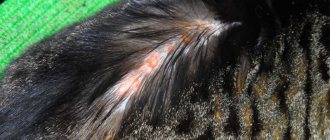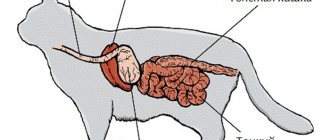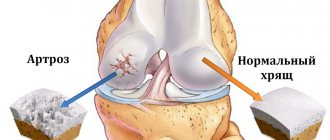Nematodes are common in cats. Penetration of parasites into an animal’s body can occur through consumption of contaminated food, contact with other members of the cat family, and even during walks in the fresh air. Even pets who do not leave their home can be infected with these parasites. These roundworms are no less dangerous than tapeworms. When signs of this helminthic infestation appear, targeted treatment is required.
What are worms?
Answering this question, it would be more correct to say: “not what they are,” but “who are worms”!
Worms (helminths in cats) are endoparasites, worms that live and reproduce in the body. These include nematodes (the most common in cats), tapeworms and flukes. Infection in cats occurs through the eggs of worms or larvae.
Cats have their own species-specific parasites. There is a group of especially dangerous helminths that pose a threat to human health.
What do worms look like in cats?
What do worms look like in kittens and cats?
Helminthiases (diseases caused by worms in cats) are very common. This situation is due to insufficient information among owners about the importance of the problem and, perhaps most importantly, to the large species diversity of cat worms.
Modern parasitology distinguishes 3 types of endoparasites:
- Flukes
(trematodes) are a dangerous, but not very common group of worms in cats. The worms are small in size, rarely exceeding 5 cm in length. Their body shape resembles a willow leaf. On the ventral side there is one or several suckers and in the depth of the sucker there is a mouth. During the development cycle, flukes have permanent hosts (most often fish and shellfish) and intermediate hosts (cats, dogs, other animals, humans). - Tapeworms
(cestodes) - they are very well adapted. Tapeworms in cats are long and flat. The body is in the form of a ribbon consisting of segments (cells) fastened together. Their length can be more than 3 meters! At one end there is a “head” with special suction cups and hooks that allow it to be securely attached to the intestinal mucosa. To reproduce the cestode in cats, the segment is separated from the tail end, releasing it into the environment with feces. Another animal or person swallows this member and also becomes infected with the parasite. - Roundworms
(nematodes) are the most common group of cat helminths. The size of roundworms in cats can vary, from a few millimeters to a meter. Outwardly, they look like a small earthworm, but this type of worm in cats is white or beige.
What does a lice eater look like?
The cat lice beetle (Felicola subrostratus) is a parasite that lives on the surface of the animal's skin. It is the causative agent of diseases such as mallophagosis or trichodectosis. They feed on keratin particles of skin, fur, secretions of the sebaceous glands, as well as blood that appears from wounds when combing. They are also called chewing lice because, unlike regular lice, they do not suck blood.
Lice eaters in cats resemble lice, which is clearly visible in the photo. They have a small oval body (1-2 mm) and a quadrangular shield-shaped head. They look translucent due to their light gray, yellowish color. Each of the parasite's 3 pairs of legs has hooks that help it cling to hairs and skin. Gnawing type mouth.
Lice eaters do not like to change their owner. The female lays up to 60 eggs and glues them to the hair roots with a special secretion. It is impossible to remove eggs from wool by hand. After 1-1.5 weeks, larvae hatch from the eggs. After another 2-3 weeks, insects appear. How quickly the parasite develops and matures depends on the conditions. So, in winter, when the cat’s undercoat is especially thick and therefore warm, lice eaters develop faster. The entire life cycle of the parasite takes a month.
Outside the host's body, lice eaters live no more than 5 days.
Types of worms in cats
Now that we have looked at what types of parasites exist, we suggest looking at a table that shows the main types of worms in cats.
| Flatworms | Roundworms | |
| Flukes | Tape | Nematodes |
|
|
|
Localization of helminths
Roundworms in cats
Roundworms are the most common class of endoparasites. The disease caused by infection with roundworms is called nematode disease.
More than 30 types of roundworms are known in cats. The species composition varies greatly depending on the region of residence. Below we will look at the ubiquitous and most dangerous helminths.
Toxocara (roundworm)
Toxocara, also known as roundworms, are common in kittens and adult cats. Toxocara сati is of greatest importance, T. Leonine and T. Canis are less common. In appearance they resemble round noodles of light yellow color. Their length starts from 3 cm and reaches 10 cm.
They are localized in the small intestine and can sometimes take root in the bile ducts and pancreas.
Toxocara worms belong to geohelminths - in this group of parasites, eggs are released into the environment with feces. 1 gram of feces can contain up to 40000
eggs!
Outdoors, under favorable conditions, a larva develops from an egg. A cat can swallow it with water, or as a result of hunting mice and birds, which are carriers of the larvae.
Toxocara is no less dangerous for kittens. Babies can become infected with worms through mother's milk or in utero, through the placenta.
Are roundworms transmitted from cats to humans?
Yes, a person can become infected with roundworms from a cat. The greatest threat is T. Leonine.
Hookworms
Hookworms
Hookworms in cats are dangerous small worms that feed on blood. Capable of causing anemia. Outwardly, they resemble a thread, 5mm -13mm long. Ancylostoma tubaeforme is typical for cats; A. Caninum and A. Braziliense are less common.
The main habitat of adult worms is in the intestines. Larvae can develop not only in the intestines, but also live in the skin.
Hookworms are also classified as geohelminths. But you can become infected with them not only by ingesting the larvae, but also by getting the larvae into the pores of the skin.
Kittens can become infected with hookworm through their mother's milk. Intrauterine route of infection does not occur.
Cat hookworms are also dangerous to humans.
Heartworms
Heartworms in cats are perhaps one of the most dangerous types of roundworms. They also pose a threat to human health! In Russia, dirofilariasis is common. The length of adult helminths living in the heart can reach 30 cm.
Infection with this parasite occurs through the bite of a mosquito, flea, louse, tick, horsefly or any other blood-sucking insect. Larvae - microfilariae - enter the bloodstream. They can only be detected by microscopy of a blood smear.
As they grow, they are localized in the subcutaneous tissue, where they can crawl freely, or in the ventricles of the heart, causing heart failure.
Tapeworms in cats (cestodes)
Tapeworms
Tapeworms are a fairly common guest in the body of cats. Diseases caused by flatworms in cats are called cestodias.
As a rule, they do not cause serious pathologies, but in large quantities they can lead to exhaustion.
All tapeworms are dangerous for the pet owner, but since the development of cestodes occurs with the participation of intermediate hosts, it is not necessary to have a pet at home for infection; it is enough, for example, to eat uncooked river fish.
Cucumber tapeworm in cats
Infection with cucumber tapeworm is called dipylidia in veterinary medicine. The length of the tapeworm is about 70-80 cm.
The development cycle of cucumber tapeworm in cats is complex. The intermediate hosts of parasites are flea larvae and lice eaters, therefore, cats that are neglected to treat fleas are at risk.
Not only a cat, but also a person can become infected, children are especially susceptible. It is important to follow a schedule of preventative flea treatments for your pet.
Wide tape on a cat
Broad tapeworm
Broad tapeworm is one of the largest worms in cats. Its size in the body of cats reaches 1-2 meters. In the human intestine it can grow up to 10 meters. The disease is called diphyllobothriasis.
A cat can become infected by consuming freshwater raw fish. Scalding and freezing does not kill the parasite. The only effective way to protect river fish is boiling for 10-20 minutes.
Echinococcus
Echinococcus in cats is a dangerous parasite with a complex development cycle. The cat is the definitive host and is in the sexually mature stage. Releases eggs into the environment. They infect intermediate hosts (herbivores, pigs and humans). As the parasite develops, dangerous echinococcal blisters appear.
Trematodes (opistarchosis and liver fluke) in cats
These are small flatworms - flukes. They are localized in the intestines, gall bladder and liver. For cats, the most important parasite is the cat fluke (Opisthorchis felineus). They pose a serious danger to humans and cause the disease opistarchosis.
Liver fluke is rare in cats.
Infection occurs through intermediate hosts - mollusks and freshwater fish. People and animals living in the Volga, Dnieper and Don river basins are at risk.
Transmission routes and risk factors
The appearance of lice-eaters is possible at any age, regardless of gender or seasons. Parasites are transmitted by contact when communicating with a carrier. This could be another cat, a dog, large pets and livestock, as well as rodents that the cat hunts. If a mother cat is infected with lice eaters, then they move onto the kittens.
In rare cases, it is possible that eggs or larvae of lice beetles may be transmitted on poorly sterilized tools used by the groomer.
Meeting parasites does not always lead to infection. If the cat receives good care and a balanced diet, then its immunity will allow it to cope with infection.
Animals whose immune systems, for one reason or another, do not function well enough, are at greater risk of contracting parasitic insects. This applies to small kittens and very elderly cats. Immunity may decrease after an infectious disease or surgery.
There are insufficient protective forces in animals that have severe chronic pathologies.
Symptoms of worms in cats
Signs of worms in cats and kittens are very diverse. Helminthiasis is a widespread disease that, as a rule, manifests itself only in the later stages, when the number of worms reaches unimaginable limits. Symptoms are mainly related to the location of the parasites.
Gastrointestinal helminths are characterized by periodic digestive disorders. It manifests itself as nausea, vomiting, diarrhea or, conversely, constipation and lack of appetite. There may be streaks of blood in the feces.
Infected cats have dull hair that falls out easily, a sagging belly, itching in the anal area and, if the liver is affected, yellow mucous membranes.
When cats are infected with lung and heartworms, the symptoms are specific: cough, anemia, heavy abdominal breathing, unattractive appearance.
In all cases, dermatitis may develop, bald patches and a rash may form. In severe cases, against the background of helminthic infestation, cats may develop toxicosis and neurological diseases. Kittens and young pets will have growth retardation.
Having discovered such symptoms, the owner is faced with questions: “What to do if a cat has worms, and what danger threatens when worms are found in a cat’s feces?”
The danger of lice eaters for cats
If you suspect lice eaters, you need to immediately begin the fight.
Wool beetles are dangerous for cats:
- They are carriers of worms, most often cucumber tapeworm. As a result, the animal loses weight, eats poorly, and digestion is disrupted. Constipation alternates with diarrhea. Blood may be found in the stool. The cat has a stomach ache.
- They provoke the development of dermatitis and allergies. The itching becomes intense and constant, the skin becomes covered with red bumps and crusts.
- If bacteria enter the areas of scratches and abrasions, an inflammatory process begins. This is accompanied by an increase in temperature, the appearance of pustules, redness and swelling of the skin.
- Lice eaters cause damage to the hair, leading to patchy baldness.
- Chronic diseases are getting worse.
Why are worms dangerous for cats?
A cat's health is at risk when there are high numbers of worms in the body. As we have already understood, the symptoms when cats are infected with worms are very non-specific. They can also be confused with bacterial, viral and non-communicable diseases. Regular prevention is important to prevent critical disorders.
• Can a cat, cat or kitten die from worms?
Worms in cats and kittens can cause death if the infestation is severe, but, as a rule, owners manage to notice the symptoms and cure the animal.
Symptoms
The appearance of frequent vomiting and nausea.
When nematodes enter an animal's body, cats suffer from the following clinical manifestations:
- loss of appetite;
- lack of immune defense;
- metabolic disorder;
- weight loss;
- multiple organ failure;
- vomit;
- sepsis;
- abscesses in various organs;
- anemia.
Treatment of worms in cats
Treatment of worms in cats is quite effective. There are several active ingredients that, in the right combination in a deworming medicine for cats, can affect all classes of parasites. They are called broad-spectrum anthelmintics.
The active ingredients of deworming products for cats include the following substances and their combinations.
Old, but still effective:
- Pyrantel pamoate / Embonate
- Paraziquantel
- Fenbendazole
- Ivermectin
More modern and safer:
- Moxidectin
- Oxibendazole
The newest substances that rarely show side effects and affect almost all worms:
- Milbemycin oxime
- Niclosamide
- Emodepside
Treatment is always carried out in a course. This is 2 or 3 times the use of drugs, with an interval of 7-14 days. Sometimes higher doses are required.
There are several forms of anthelmintics:
- Deworming drops for cats
- Suspensions
- Pills
- Injections
Anti-worm suspensions for cats
Suspension Parasiticide
Suspensions for deworming are one of the most convenient and popular forms of anthelmintic drugs. Their advantage is the ability to accurately dose according to the pet’s weight and ease of feeding. Anti-worm suspensions can be given to kittens and adult cats.
Some of the modern, safe and effective drugs for the treatment and prevention of helminthiases:
- Anti-worm suspension “Parasicide” for cats
- “Clandestine” is a suspension for cats against worms.
How to give a suspension against worms
Giving your cat a deworming suspension is quite simple. The required amount is drawn into a syringe (usually included) and injected onto the root of the tongue, or mixed with food.
Deworming tablets
Deworming tablets for cats are a fairly modern form. Many anthelmintics are available in tablets. They almost always add meat flavorings for better eating.
How to give a cat a deworming tablet
Cats willingly eat tasty deworming tablets on their own. For bitter drugs, it is most convenient to use a device - a tablet dispenser (piller). You can put the tablet on the tongue and make sure that the cat swallows it. For picky cats, you can crush the tablet into powder and mix it with water or a treat.
Injections for worms
Injections against worms are very effective, since the drug immediately enters the bloodstream, which feeds most parasites. Typically used only by veterinarians in a clinical setting. Their use requires careful dosing, and an overdose will undoubtedly cause side effects.
Drops on the withers for worms
Drops on the withers for cats against worms are a new class of drugs. They usually work not only against endoparasites, but also against fleas and ticks. The active substance is absorbed into the blood through the skin, so it is very important to follow the technique of applying drops.
Folk remedies for worms for cats
The effectiveness of folk remedies against worms is questionable. They can help in the first stages of infection, but are completely useless with moderate and severe infestation. Traditional anthelmintics are not safe. Dosing herbal remedies is difficult, and overdose easily causes poisoning. Allergic reactions often occur. Among herbs, wormwood tincture and tansy decoction are recommended.
Prevention of lice-eater infestation
Today, special collars containing insecticides and protecting animals from various ectoparasites are becoming increasingly popular. Such accessories can also be used to get rid of ectoparasites, but in this regard they are not so effective. But they can very effectively repel fleas, ticks, lice eaters and other insects that prefer to live on cats.
To prevent parasite infection, it is recommended to follow the following preventive measures:
- regularly use special anti-parasitic shampoos, sprays or drops, treat the animal’s fur, especially if it walks outside;
- periodically inspect your pet (lice eaters are heat-loving insects, so to see them, you need to place the cat closer to the heat source and wait a little);
- periodically wash the bedding and blankets on which the cat prefers to lie;
- undergo regular examinations at a veterinary clinic.
In addition, if possible, the pet should be protected from contact with infected animals, fed rationally, and properly cared for.
Getting rid of lice eaters is not difficult, and it is necessary to do this if the cat is infected. These insects cause serious discomfort to your pet and can cause various diseases. After treatment, you should thoroughly wash the cat’s bed, house and other things, and treat surfaces in the house with an insecticide (with caution to avoid poisoning animals and small children).
Prevention of worms in cats
Prevention of infection with worms in cats is perhaps the most important means of helping to preserve the health of the pet and its owner.
To do this, it is necessary to prevent healthy animals from coming into contact with untreated ones, feed them with ready-made or heat-treated food, keep shoes and outdoor clothes in a closet to which the cat does not have access, and keep the litter box clean.
Particular attention is paid to preventive treatment schemes using veterinary anthelmintic drugs:
- For cats that do not go outside and do not have contact with other animals, treatment is recommended 2 times a year, or testing feces for worm eggs.
- For cats that periodically walk outside under the control of the owner and communicate with other treated animals, prophylaxis is carried out 3 times a year.
- Cats that hunt mice, often walk outside, or interact closely with untreated animals are recommended to be treated 4 or more times a year.
Trichinellosis
The causative agent is Trichinella spiralis from the family Trichinellidae. It parasitizes cats, foxes, arctic foxes, martens, dogs, lynx, rats and many wild animals. Sexually mature helminths parasitize the intestines of animals.
Etiology.
Reinfection of cats occurs when they eat contaminated, non-neutralized meat waste infected with Trichinella larvae, when they eat dead animals or the carcasses of killed animals.
Diagnosis
during the life of animals, they are diagnosed on the basis of an immunological (ICP) study of cats, as well as an assessment of clinical and epidemiological data; posthumously - based on the results of compression trichinoscopy or digestion of calf muscles in artificial gastric juice.
Treatment
of trichinosis in cats.
Benzimidazole drugs are prescribed with food.
Prevention.
Carry out strict veterinary control over the storage and quality of processing of animal feed. The meat of wild animals is fed to cats only in a boiled form, regardless of the results of the test for trichinosis, and marine animals - only if the results of the trichinelloscopic study are negative.
How does infection occur?
The most common route of infection is when lice eaters themselves or their eggs get from the fur of a carrier cat onto a healthy pet. This may happen in the following cases:
- with direct contact (games, mating, fighting);
- through combs and other grooming items;
- when using one litter;
- parasites pass to kittens from a sick mother;
- when catching rodents (among mice and rats, individuals infected with lice-eaters are sometimes found).
In addition to the immediate causes of infection, there are factors that favor this process. These include:
- Keeping large numbers of animals without proper hygiene conditions.
- Poor or unbalanced nutrition, which weakens the pet’s body.
- Reduced immunity. The sebaceous glands of cats weakened by chronic diseases do not produce enough secretion that can limit the population of parasites.
- High humidity. Promotes intensive reproduction of lice eaters, which applies not only to seasonal weather changes, but also to the microclimate in the room where the cat lives.
Lice-eater larvae in a kitten, transmitted through the mother.
The species of insects that parasitize cats do not live on the body of humans or other animals, but their larvae can be carried into the house on the owner’s contaminated shoes or clothes.
Diagnostics: at home and in the veterinary clinic
To make a diagnosis at home, you need to place the cat under a lamp or natural light source for 8-10 minutes. Heat-loving parasites will definitely come to the surface of the fur to warm themselves. They can be seen under a magnifying glass, and the remains of their vital activity - larger black dots - are visible even with the naked eye. The rest of the time, pests are inactive, so it is the reaction to light that will help distinguish them from fleas.
If the home test result is positive, be sure to schedule an examination at the veterinary clinic. Using a skin scraping, the doctor will determine the degree of infection and select a safe medicine for your pet.
In case of advanced infestation, drugs against lice will have to be supplemented with other medications aimed at suppressing secondary infection and boosting immunity.











